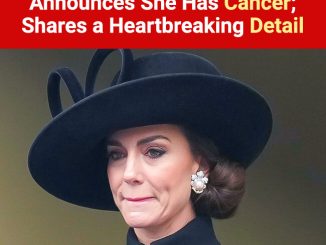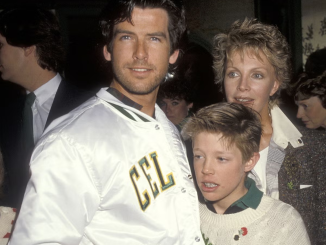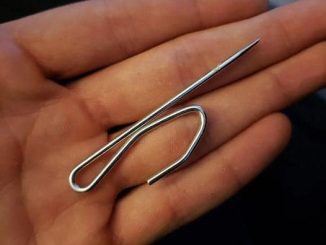To begin, let’s revisit a bit of history. The first Barbie doll was released in 1959, marketed as the epitome of anatomical perfection. Unlike the traditional big-eyed celluloid dolls, Barbie’s adult face and feminine figure offered a fresh alternative, quickly captivating young girls. However, as time passed, concerns arose. Doctors warned of the doll’s unintended influence, as teenage girls began striving for its unattainable proportions. Barbie became linked to cases of anorexia, affecting hundreds, if not thousands, worldwide.

While browsing for fashion inspiration this season, I stumbled upon an article praising an Austrian Barbie-inspired figure as a style icon. Yet, finding accurate information about her proved challenging.
Meet Billie (or Anna, depending on the source), a 30-year-old Vienna resident who describes herself as a style icon and “Europe’s most beautiful artificial woman.” Born in 1994 into an ordinary family, Billie had a typical childhood, attending school and playing sports without any standout interests. During her teenage years, she embraced the emo subculture, dyeing her hair black, getting piercings, and later adding tattoos.

At 18, Billie grew disenchanted with the emo aesthetic, realizing it wasn’t garnering the attention she craved. This epiphany led her to transform her image, trading dark tones for the pastel hues of babydoll pink. Although her new look attracted more notice, Billie still felt inadequate. At 19, she underwent her first breast augmentation, beginning a journey of self-reinvention that would define her public persona.
Billie’s rise to fame was gradual. Initially, she earned money by sharing photos on various online platforms, receiving payments based on views. She even claims to have been among the early pioneers of OnlyFans, though this assertion remains unverified.

Over time, Billie caught the media’s attention, making appearances on television and talk shows where she shared stories about her life and transformation. Before her drastic changes, she was a naturally attractive young woman with striking eyes. However, Billie admitted she saw little beauty in her original appearance, opting instead for cosmetic surgery to fit societal trends and ideals.
Despite her fame, Billie has acknowledged her dependency on plastic surgeries and cosmetic injections. While she recognizes her addiction, she feels unable—and perhaps unwilling—to change course. Her story serves as a poignant reflection of the lengths some go to in pursuit of beauty and acceptance.
I sent daily letters to my son from a nursing home and heard nothing back, until a stranger arrived to take me home

After my son Tyler persuaded me to move into a nursing home, I began writing him daily letters to express how much I missed him. Despite my efforts, he never replied. Then one day, a stranger came to take me home.
When I turned 81, I was diagnosed with osteoporosis, which made it difficult for me to move around without help. This made it hard for Tyler and his wife, Macy, to care for me, so they decided I should go to a nursing home. Tyler told me they couldn’t care for me because of their busy lives and insisted the house I had lived in was too large for just me.
I was heartbroken as I realized their decision was less about my care and more about wanting my house for themselves. That night, I wondered what I had done wrong. I thought I had raised a good son, but his actions felt like a betrayal. Despite my pleas, Tyler and Macy took me to a nearby nursing home, promising to visit often. I hoped that moving there might not be so bad since they would come to see me. Little did I know, Tyler was just trying to get rid of me.
Days turned into years in the nursing home. Although the staff was kind and I enjoyed chatting with other residents, I longed for my family. Without a phone or tablet, I wrote daily letters to Tyler, asking him to visit or update me, but I never received a reply.
After two long years, I lost hope that anyone would come. Each night, I prayed to return home, but I tried not to get my hopes up. One day, however, my nurse told me a man was at the desk asking for me. Excitedly, I grabbed my walker, thinking it might be Tyler.
To my surprise, the man waiting for me was someone I hadn’t seen in years. It was Ron, a childhood friend of Tyler’s who had once lived with us. He greeted me warmly and explained that he had just returned from Europe. When I told him about my situation, he looked concerned and asked me to sit down.
Ron shared that Tyler and Macy had tragically died in a house fire the previous year. He had found their house abandoned and discovered my unread letters in the mailbox. Hearing about Tyler’s death filled me with conflicting emotions; despite my anger towards him, I felt heartbroken.
Ron stayed by my side as I cried, comforting me as I mourned my son and daughter-in-law. He reminded me of how I had taken him in as a child when he was in need. Unlike Tyler, Ron had grown up poor and had lost his parents, but I had treated him like my own. Ron then offered to take me home with him. I couldn’t believe it. My own son had sent me away, and now here was Ron, who wanted to care for me. Gratefully, I accepted his offer.
That night, Ron helped me pack my belongings and took me to his new home. He had a loving family who welcomed me with open arms. In those final years, I found happiness surrounded by people who truly cared for me.
It’s important to respect your elders and recognize their sacrifices. Tyler failed to appreciate all I had done for him and chose convenience over care. Family isn’t solely defined by blood; Ron, despite not being related, remembered my kindness and chose to repay it by taking me in and caring for me.



Leave a Reply